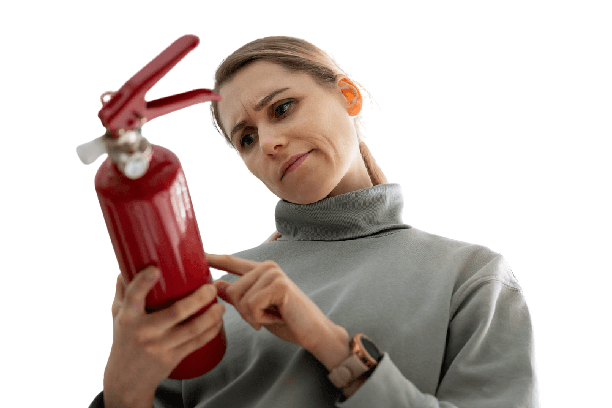House fires have been responsible for thousands of deaths over the years. Cooking equipment, electrical components, heaters, and smoking elements are some of the most prevalent causes of home fires.
Keeping smoke detectors in working order is frequently emphasized as part of home safety. However, not much is heard when it comes to fire prevention methods. If you want to ensure your family’s and home’s safety, it might be time to consider getting a fire extinguisher. When safety against fire is your concern, it might be time to think about a fire extinguisher testing service once you purchase your first one.
Fundamentals Of Using A Fire Extinguisher
Purchasing a fire extinguisher for your home is a wise decision. It’s something to think about if you want to be safe in the event of a fire.
Once you have one, make sure you know how to use it in an emergency. Operating a fire extinguisher is relatively straightforward, and you should remember the acronym PASS, which represents the following actions:
- Pull the pin and angle the fire extinguisher nozzle away from you.
- Aim low by directing at the fire’s base.
- Squeeze the lever steadily and gradually.
- Sweep the nozzle on all sides of the fire.
Don’t forget to read the instructions thoroughly, especially the additional usage tips and maintenance instructions.
A fire extinguisher should be serviced regularly to ensure it works properly. In general, examining it at least once a month is recommended. You must test the pressure indicator, verify the weight, and inspect the pressure gauge, among other things. For efficiency, a fire extinguisher should have a pound per square inch (p.s.i) range of 185-205.
If you don’t want the inconvenience, get your extinguisher professionally serviced for any damage or leakage once a year. It’d be best to replace your fire extinguisher every five years.

Tips For Choosing A Home Fire Extinguisher
A fire extinguisher in your home can be highly beneficial. However, there are considerations to keep in mind before buying one. Here are several useful pointers to help you select the right fire extinguisher for your home:
Also Read 5 Signs Of A Gas Line Problem At Home
1. Know The Type Of Hazards You’ll Be Dealing With
The usual types of fire hazards in your home will guide you in deciding the type of fire most likely to break out. Fire hazards are typically common combustible materials, electrical tools or appliances, and flammable liquids such as gas or oil.
Fire extinguishers are categorized according to the fire type they can control. Older fire extinguishers have colored geometrically shaped labels indicating their classification, whereas newer models have pictures of the hazards they can extinguish.
- Class A consists of common combustible materials such as cloth, wood, and paper.
- Class B consists of flammable liquids such as oil, grease, and gasoline.
- Class C consists of electrical equipment such as tools and appliances.
- Class D includes flammable metals.
- Class K includes cooking oils such as animal fat and vegetable oil.
Most fire extinguishers for home and office use are multi-purpose, ideally for classes A to C.
2. Examine The UL Rating
If you check the label of a fire extinguisher, you’ll notice the Underwriters Laboratory (UL) rating. A fire extinguisher undergoes testing by the Underwriters Laboratory (UL) to ensure safe and efficient performance. You can compare the extinguishing power by comparing the ratings. In layman’s terms, the figures represent the amount of fire that an extinguisher can douse.
The UL rating is categorized into Class A and Class B:C ratings. The number beside the letter A run from one to forty, representing the water equivalent, with one equaling 1 1/4 gallons. For example, an extinguisher labeled 4A may store up to five gallons of water.
The numbers preceding the letters B and C indicate the number of square feet the extinguisher can eliminate. A 30:BC extinguisher, for example, can put out a fire larger than 30 square feet while the letter C indicates that it’s suitable for electrical fires. For example, on the label, you’ll find the classification 3-A:40-B:C. This fire extinguisher can extinguish a fire larger than 40 square feet and hold up to 3.75 gallons of water.
3. Determine The Appropriate Fire Extinguisher Size
Size is a crucial element if you plan to buy a fire extinguisher. It should be large enough to effectively put out a raging fire but not so large and heavy that an average person finds it difficult to use. Consider the size of the room and how quickly the fire can spread if hazards are present during the selection process.
Some of the common sizes of fire extinguishers for home and commercial use include:
- 10-pound – an ideal choice for commercial spaces, warehouses, workshops, and garages due to the likelihood of hazardous materials
- 5-pound – ideal for office and home environments
- 2-pound – an excellent option for portability, especially for vehicles
An approach worth considering is having several smaller fire extinguishers instead of a large one. The method ensures one will work, especially in an emergency, such as a cooking-related fire or toppled candles.
Final Thoughts
A fire extinguisher should be a must-have in any home. If you want to ensure your family’s and home’s safety, consider investing in one soon. Fire extinguishers are categorized based on the hazards they’re capable of handling. If it’s your first time purchasing one, there are crucial considerations to keep in mind. With these helpful hints, you’ll be able to find the perfect one for your home in no time.

